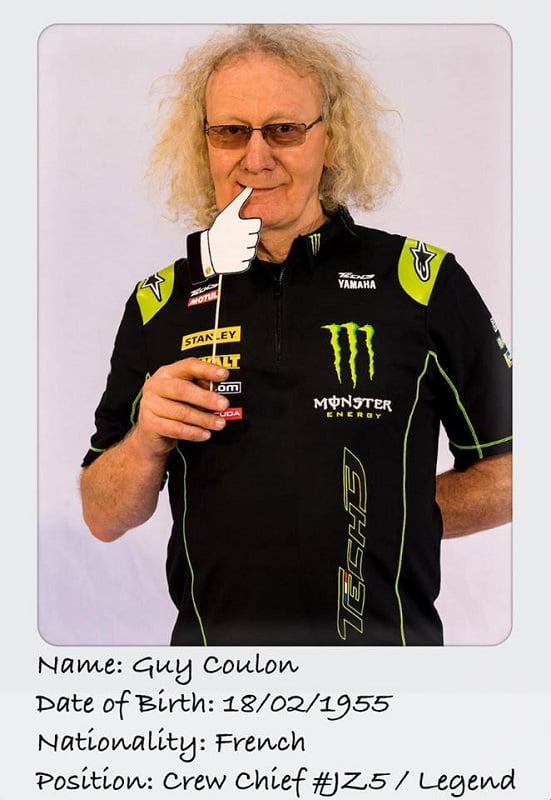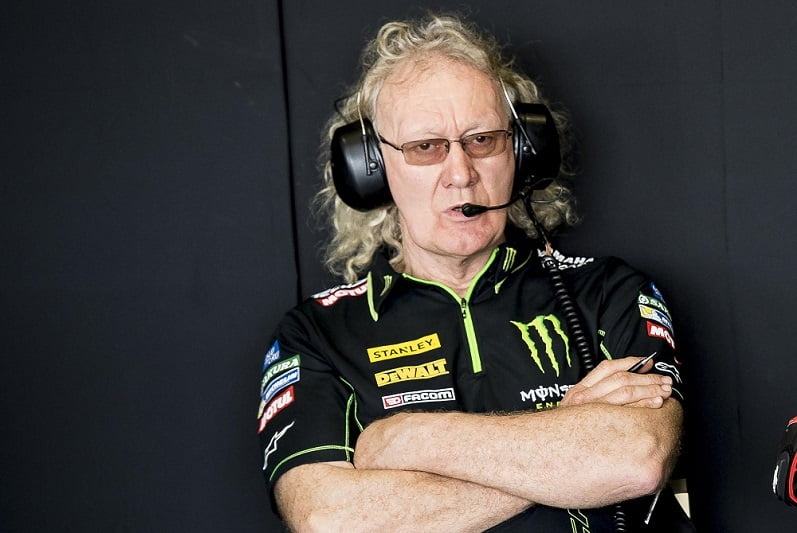Tenth on Friday at Assen at 0.5, qualified eighth at 0.2, Johann finished eighth at 7 seconds on Dutch soil. He is still in the world leading quartet in the Championship ahead of Ducati, Suzuki, KTM, Aprilia and Honda (with the sole exception of Marquez).
For his team leader Guy Coulon, how did the whole weekend go with Johann in Assen?
“We started off rather slowly because it wasn't easy on Friday and Saturday. We had speed, but not as a group. Alone it was fine, but in a group it was average to stop, so you had to take a little more safety margin, which made things less simple. We managed to correct things quite well for Sunday, which allowed us to be in a good rhythm. »
Johann said this Friday evening in Assen: “my weak point was in very fast changes of direction where you are in 6th and you have to downshift to 5th and 4th, like in turns 6/7, and 13/14”. What are the difficulties in terms of driving and adjustments?
“He has a lot of inertia in these very rapid changes of turns, which are obviously quite physical. Everyone encounters this same type of problem in these turns, obviously, sometimes more or less. Afterwards, depending on your bike, you can work on the center of gravity a little, things like that. But it's contradictory with the settings we need to stop the bike as a group. You have to find the compromise that will be the least annoying! »
Generally speaking, during the third free practice session on Saturday morning, is it more important to finish among the top 10 to qualify directly for Q2, or to properly prepare the bike for the race (choice of tires , settings) even if it means going through Q1?
" No. Going through Q1 is far too risky. Plus it costs you tires, because even if you have an extra set of tires, you still have to put two rear tires on for Q1, so you always end up with a tire deficit.
“Nervously, it's exhausting for the driver because there is FP4 (13:30 p.m. to 14:00 p.m.), Q1 (14:10 p.m. to 14:25 p.m.) and Q2 (14:35 p.m. to 14:50 p.m.) which follow each other every ten minutes. Without forgetting the risk of falling. So it's very complicated. »
After two fast circuits (Mugello, 5,245 km long and with 15 turns, i.e. 1 turn every 349 m, then Barcelona: 4,627 km, 14 turns, including 1 every 330 m), is this the sinuosity of the Assen circuit? (4,542 km and 18 turns including 1 every 252 m) which favored different bikes than at Mugello or Barcelona?
“The Ducatis were quite competitive in different ways on the three circuits. The selection of tires was suitable because both the soft (soft) and the hard were very well suited to the race. It was mainly a question of feeling because they are tires with identical constructions. The hard tire was made of softer rubber than the soft one, but with thermal solutions that could be superior, and that is why they were considered hard.
“The side identification of the tires is one with a white stripe (soft), one without anything (medium/medium) and one with a yellow stripe (hard). This can create confusion among spectators.
“We have information on the rubbers located on the left, center and right of the tire. On their positions, and on their thermal resistance. So with that, we try to get a little idea.
“In terms of calibration, the hard used this year at Assen was considered medium. And this year's medium was the hard one. Which means that no one took him on medium this year, since he was logically too hard.
“This season we had a different thermal load at Assen than in other years because the weather was nice all week and quite hot at ground level. We also realize that softs have very good wear resistance when it is hot because they slip a little less and heat the surface less, and we then have fewer problems.
“So it’s always a compromise between the bike, the rider and the tire. The soft will perhaps give a little more traction, but it can move on the rubber. Some pilots don't like it, others it doesn't bother them. We saw that it was around 60% wear, regardless of the tire used. The tires were therefore all well suited to the conditions at Assen. »
Miguel Oliveira will ride with you at Tech 3 in 2019 (with Hafiz Syahrin) on KTM. I guess you're watching him roll carefully this year. Do you think he has any predispositions for the MotoGP category?
“He is quite brilliant in the race, but very clearly he will have to improve his positions in practice. In Moto2, you can do climbs, in MotoGP it's much more complicated. When you start seventeenth and finish on the podium in Moto2, out of the 15 you pass, there are 10 that are quite easy to overtake. In MotoGP, if you are 17th, out of the 16 guys in front of you, there are 16 who will be difficult to overtake! »
After the imposition of a unique electronic box and software, the 2019 regulations will require the same to be done for the inertial unit*. Are you in favor of this initiative?
*For more details on inertial units, consult ceci et ceci.
“The various changes to the regulations were regularly criticized, but ultimately everyone adapted well to them. In any case, the course and the harshness of the races seem to suit the spectators. Races like Assen are now quite common, with 126 overtakes for the top 8 in the race (Editor's note: and more than 175 for all 24 pilots, according to OffBikes / Dorna).
“The regulatory developments of recent years have not harmed the show, quite the contrary. However, it seriously complicates the work of people who deal with IT. The strongest who once rode far ahead, now they ride much less far ahead. It's not any worse, you just have to compare it with the relative interest of certain races in the 80s."

Photos © Tech 3




